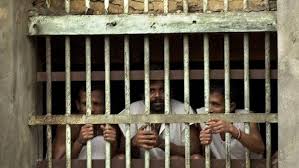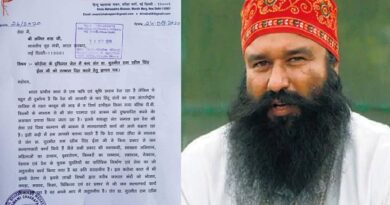Indian jails are overcrowded with less educated prisoners and understaffed : NCRB report
Indian jails overcrowded, understaffed, reveals NCRB report; most prisoners are undertrials, over 70% of them haven’t passed matriculation exam .
-
The majority of prisoners in India are people who have not yet been pronounced guilty by a court of law, according to the 2017 report on prison statistics.
-
According to the report, at the end of 2017, 68.5 percent of the total prisoners in India were undertrials.
-
The data also suggests that the criminal justice system is more likely to incarcerate people from the marginalised sections of society.
-
In Jammu and Kashmir, 8 percent of all incarcerated people were in jail under preventive detention, the highest among all states of India
The majority of prisoners in India are people who have not yet been pronounced guilty by a court of law, according to the 2017 report on prison statistics released recently by the National Crime Records Bureau (NCRB).According to the report, at the end of 2017, 68.5 % of the total prisoners in India were under trials, 30.9 percent were convicts, 0.5 percent were detenues and 0.2 % were other inmates. This is broadly similar to 2016, however, the number of under trial prisoners in 2017 rose by 0.8 percent while those of convicts fell by 0.4 percent.
Among states, the highest percentage of under trial prisoners was in Meghalaya (88.4 percent) while the lowest was in Mizoram (52.9 percent). Among Union Territories, the highest percentage of under trial prisoners was in Dadra and Nagar Haveli (100 percent) while the lowest was in Andaman and Nicobar Islands (48.3 percent).
Worryingly, over a quarter (25.1 percent) of under trial prisoners had been behind bars for over a year. Nationwide, the percentage of under trials who spent over five years in prison is 1.6 percent. However, two states are outliers in this respect — Jammu and Kashmir (10.5 percent) and Gujarat (8.2 percent).
As far as detenues are concerned, while the national average is a small figure, 0.5 percent, one state is a bit of an outlier. That state is — no prizes for guessing — Jammu and Kashmir, where 8 percent of incarcerated people were detenues. Preventive detention is when a person is placed in custody to prevent them from committing a crime in the foreseeable future, rather than for an alleged crime that has already taken place.
Significantly, the data also suggests that the criminal justice system is more likely to incarcerate people from the marginalised sections of society. Among the total undertrials in the country, 70.2 percent have not studied till Class 10. Undertrial prisoners who are illiterate comprise 30.9 percent of the total, which means that nearly one in every three of such inmates has not had any access to education.
The situation is nearly identical when it comes to convicted prisoners. Data shows that 70.8 percent of convicts have not studied till Class 10, while the percentage of illiterate convicts is 28.5 percent.
Overcrowding
Data from the NCRB’s report confirms the widely-held notion that prisons in India are overcrowded. The nationwide occupancy rate in jails at the end of 2017 was 115.1 percent. From 2014 to 2016, this figure had seen a marginal dip from 117.4 percent to 113.7 percent. However, data shows that overcrowding in prisons has increased in 2017.
According to the report, Uttar Pradesh prisons are most crowded in the country with 165.0 percent occupancy, followed by Chhattisgarh (157.2 percent) and Delhi (151.2 percent). On the other hand, Tripura has the lowest incidence of overcrowding (47.7 percent) among the states, while Lakshadweep has the lowest (3.1 percent).
Women’s jails are relatively less crowded, with an occupancy rate of 55.9 across the country. However, three states have an occupancy rate of over 100 percent — West Bengal (142.04 percent), Maharashtra (119.8 percent) and Bihar (115.1 percent).
Staffing
Vacant posts in the jail administration constitute another major challenge for prisons across the country. On average, only 68.8 percent sanctioned posts were filled at the end of 2017.
Jharkhand fares by far the worst in this respect, as only 33.5 percent sanctioned posts have been filled in the state. Not surprisingly, the ratio of inmates per prison staff in the state is the worst by quite a distance. The state has 21 prisoners for every staff member, the second-worst state being Uttar Pradesh, which has 14 prisoners for every staff member.
On the other hand, almost all sanctioned posts in Nagaland (99.5 percent) have been filled. The state has one inmate for every prison staff member.





